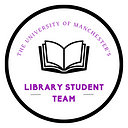Top Ten Tips for Proofreading
By Alex from the Student Team
Proofreading is often overlooked or given too little importance in the writing process. But way too often marks are lost on mistakes that could have been avoided with more careful proofreading. To help you make sure that your essay will be polished to the highest standard, the Student Team have prepared some Top Ten Tips to help you proofread like a pro!
Top Tip 1
Add comments! By annotating while you proofread, you can highlight all the points that you feel need editing and address them once you’ve finished reading your work.
Inserting comments in the document allows you to read your work in its entirety and quickly note down points or mistakes that you wish to address. This allows you to focus on reading the entire piece of work as a whole, and then come back and look more closely at each of the required changes. You’ll also be able to easily spot any recurring mistakes in your work, helping you to avoid them in the future!
Top Tip 2
Have a look at the mark scheme for your coursework to make sure you address all the points mentioned and answer all the questions effectively.
Marks for your essay are awarded in line with a marking scheme. This will outline the key question as well as all the points you need to discuss in your essay. When proofreading, check that you have included all points mentioned in your marking scheme. Struggling with the word count? Check your marking scheme, you might have included irrelevant points that won’t bring you additional marks.
Top Tip 3
Check the flow of your work. Do your paragraphs link together clearly? Use phrases such as ‘furthermore’, ‘in addition’ or ‘moreover’ to help the reader follow the argument.
Think of your essay like a story. In order to keep the reader engaged, it need to have a clear introduction, a good conclusion and a nice and smooth transition from a paragraph to another. Always check that your essay has a ‘story-like’ flow, helping the reader to closely and easily follow your argument. Using linking phrases can help you make transitions from one paragraph to another more smooth.
Top Tip 4
If you struggle with something specific, have a friend look through it. Maybe you use too many commas or aren’t sure about the synonyms. Proofreading is much easier when you know what you are looking for.
It is definitely a good idea to ask your friends’ help when it comes to proofreading. Sometimes it is difficult for the writer to spot little mistakes that occur frequently, such as using to many ‘thus’s. Your friends can give you new perspectives on your piece of writing and might help you identify what you need to change to make your work sound better. One you’ve identified what the problem is, it is much easier to fix it.
Top Tip 5
Not sure how to write in a more academic style? Check out the University’s Academic Phrasebank for a big collection of phrases.
Writing in an academic style can be very challenging, especially in the beginning. When proofreading, have the University’s Academic Phrasebank handy and try to use some of the suggested phrases in your essay. This will make your essay sound more academic and will also give it more clarity.
Top Tip 6
Focus on one thing at a time: first look at the flow, then the spelling and grammar.
When proofreading, try to look for specific things such as flow, grammar, spelling or the points covered in your argument. Look at each of these in turn, it is more difficult to spot mistakes and inconsistencies if you divide your attention.
Top Tip 7
Check you references, headings and figure labels. Make sure to do one read-through where you’re explicitly looking typos in the paratext.
Once you’ve checked the main text of your essay, also remember to check whether there are any mistakes in the reference list, heading and figure labels. It is easy to miss these out, so make sure you put this step on your proofreading checklist.
Top Tip 8
Be consistent! Inconsistencies in heading formatting or word capitalisation can distract the reader.
When editing your essay, make sure that you have used the same font size and style throughout and that the tone of your essay is consistent. Changes in formatting or tone can distract the reader and will prevent your ideas from getting across.
Top Tip 9
Take a break and come back to your coursework with a clear mind. You may spot things you didn’t notice earlier.
Try to finish your coursework at least a week ahead of deadline. It is very useful to leave it aside for a few days and then have another look at your essay. Continuously working on it might make you unable to spot mistakes or a lack of clear flow in your essay. Taking a break and then coming back to it will equip you with a new and more critical perspective!
Top Tip 10
Read feedback you receive carefully and use it to avoid the same mistakes in the future.
Feedback from previous essay is a very useful tool when proofreading. Past feedback can give you a good idea of your strong and weak points in essay writing. Put in extra time and effort when checking the areas you are not so good at, for instance referencing, as use additional support to make sure you’ll submit a good quality coursework.
